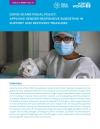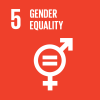FOUND 3 RESULTS
Since the start the COVID-19 pandemic, almost USD 16 trillion has been pumped into the global economy, and governments are now rolling out second and third phases of support. With the introduction of vaccines, some countries can begin to get the pandemic under control and start investing in recovery. Most countries, however, are still grappling with the pandemic’s immediate health and socio-economic fallout, including its outsized impact on women. While the adoption of policy measures to prevent or respond to the surge in violence against women is more widespread, the social protection and jobs response has not adequately supported women’s economic security nor addressed care work or the financing of care services. This policy brief presents entry points for the application of gender-responsive budgeting to COVID-19 support and recovery packages. Drawing on country examples, this brief provides recommendations on the use of gender budgeting tools to identify gaps in policy responses and direct spending towards gender responsive COVID-19 measures.
Sustainable Development Goal (SDG) Indicator 5.c.1 “Proportion of countries with systems to track and make public allocations for gender equality and women’s empowerment” has been recently reclassified as Tier II by the Inter-Agency Expert Group on SDGs. The indicator measures progress towards Target 5c of the SDGs to “adopt and strengthen sound policies and enforceable legislation for the promotion of gender equality and the empowerment of all women and girls at all levels”. It links the policy and legal requirements for gender equality with resource allocations for their implementation. By tracking resource allocations, governments introduce deliberate measures into the planning and budgeting cycle to meet their gender policy objectives such as eliminating gender based violence or increasing women’s employment. By making these allocations public, governments commit to higher levels of transparency and accountability in budget decision making.
Since the start of the COVID-19 pandemic, almost USD 16 trillion has been pumped into the global economy, and governments are now rolling out second and third phases of support. With the introduction of vaccines, some countries can begin to get the pandemic under control and start investing in recovery. Most countries, however, are still grappling with the pandemic’s immediate health and socio-economic fallout, including its outsized impact on women. While the adoption of policy measures...

